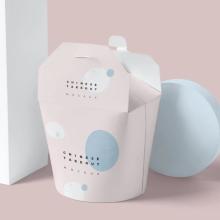Plate stock board is the base paperboard used to make disposable plates or food-grade wrapping paper that can come into direct contact with food. This raw paper is produced from high-quality virgin wood pulp through a rigorous pulping process and papermaking technology, which ensures that it meets food contact safety standards while having good physical strength and hygiene properties.
Features
- Food safety: the raw paper of dinner plate must comply with strict food safety regulations, does not contain harmful chemicals, such as fluorescent agents or other additives that may migrate into food, and undergoes high-temperature disinfection and sterilization to ensure that it is harmless to the human body.
- Pure material: high-quality napkin is made from natural wood pulp, ensuring that the paper is pure and free of impurities, and has good air permeability and moisture absorption.
- Excellent mechanical properties: with the advancement of papermaking technology, the mechanical properties of dinner plate paper have been significantly improved, with sufficient tensile strength and folding resistance, and can carry a certain weight of food without rupture.
- Environmental protection and sustainable development: modern napkin production focuses on resource recycling and environmental friendliness, and many products can achieve biodegradation, reducing the impact on the environment.
- Expanded functionality: some of the original paper can be coated or treated with special coatings to enhance the water and oil resistance, preventing the penetration of food grease and moisture, improving the convenience of use, and better protecting the freshness of food.
Applications
- Disposable tableware manufacturing: Plate paper is widely used in the production of disposable plates, bowls, and other catering containers, which are commonly used in fast food restaurants, take-away industry and various party occasions.
- Food Packaging: As a food packaging material, napkin can be used for wrapping ready-to-eat food such as bread, cakes, sandwiches, etc., or used as baking paper or steaming paper.
- Table service: In restaurants, plate paper is often placed at the bottom of the plate to absorb excess grease and keep the table clean, as well as to serve as a vehicle for brand promotion and to enhance the dining experience.
- Creative Decoration: Although not the main use, raw dinner plate paper can also be artistically processed and used for decorative design of food plates, especially in Western cuisine, to add visual aesthetics.





